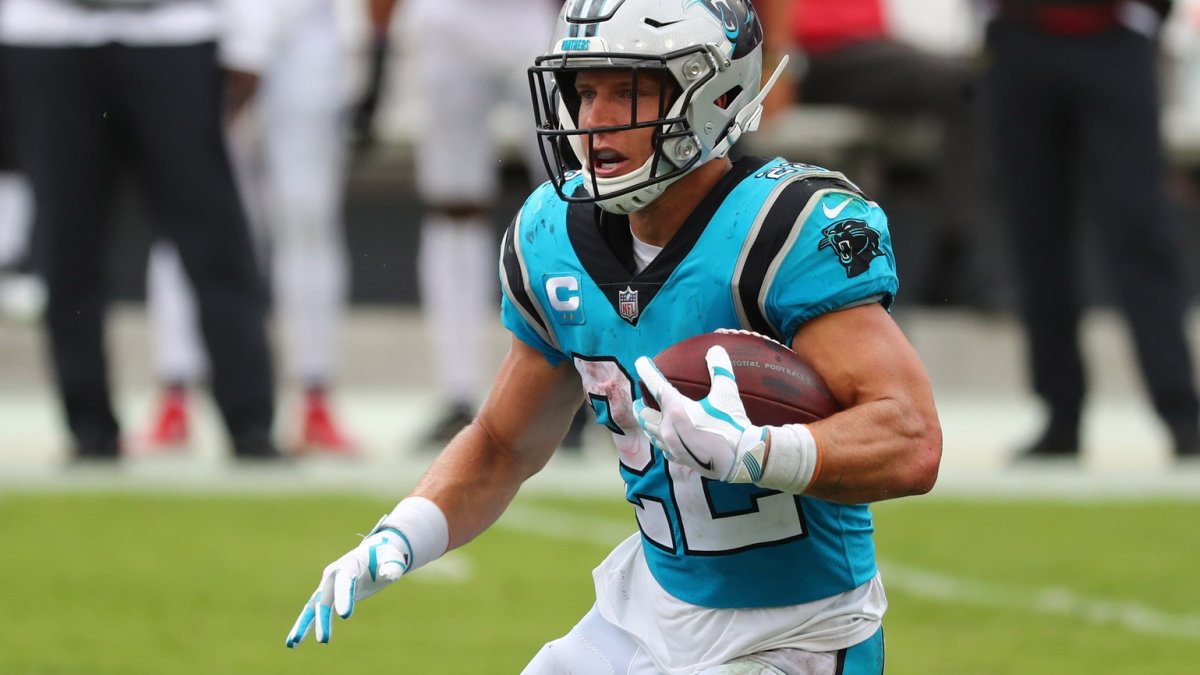It’s time to take a full swing at best ball season, as there is no better way to prepare for redraft fantasy football. No start-sit decisions or waiver wire means the only path to victory is a draft built on optimal roster construction that identifies the right players.
Instead of ranking and sorting players based on median projections, we should be seeking the right mixture of players throughout our roster — those that offer either the capability to explode on any given week or provide consistent lineup-filling performances.
Subscribe to
To identify these players, we will use tiers as opposed to rankings, as the latter always shows an equal gap between all players but there can be a drastic drop off between certain players. The correct approach utilizes tiers to identify when value drops off in a draft, along with data points to highlight the type of players you should be targeting in best ball formats.
A player's standard deviation highlights the range of outcomes the player is capable of. A higher standard deviation indicates a more boom-or-bust type of player, while lower can be viewed as a more consistent weekly fantasy scorer.
Starting week is how many times in 2020 that player put up a top-12 fantasy performance as a quarterback or tight end or a top-30 fantasy performance as a running back or wide receiver.
Top fantasy weeks are the ones that separate you from other fantasy teams, with a quarterback or tight end finishing in the top three at their respective positions and a running back or wide receiver finishing in the top five.
Description of Column Headers
| ADP | Underdog ADP as of May 29 |
| SD_Fpts | Player's standard deviation of Underdog Fantasy points scored since 2017 |
| Mean_Fpts | Player's mean Underdog fantasy points scored since 2017 |
| Starting Weeks | Percentage of starting fantasy weeks when playing in 2020 |
| Top Weeks | Percentage of top fantasy weeks when playing in 2020 |
Rookie numbers are from the 2020 FBS season. For more information on strategy to prepare for best ball drafts, check out the PFF 2021 Best Ball DraftKit. You can find more 2021 best ball rankings broken down by either round or positional group by PFF analysts Andrew Erickson, Ian Hartitz, Nathan Jahnke, Jarad Evans and Kevin Cole.
TIER 1 – Only Injuries can stop us
| Name | Position | ADP | SD_Fpts | Mean_Fpts | Starting Weeks | Top Weeks |
| Christian McCaffrey | RB | 1 | 10.47 | 22.87 | 100% | 100% |
| Dalvin Cook | RB | 2.2 | 9.23 | 19.39 | 100% | 43% |
| Saquon Barkley | RB | 3.5 | 9.71 | 20.69 | 50% | 0% |
| Derrick Henry | RB | 3.9 | 11.17 | 15.11 | 81% | 38% |
| Alvin Kamara | RB | 5.3 | 10.67 | 21.32 | 93% | 47% |
If you can feel confident in any draft pick, it has to be one of the first five running backs off the board, who are all ensured significant touch percentages any game they are healthy. Outside of injury concerns, nothing will slow the top three, but an additional argument can be made against the final two.
Derrick Henry has the highest deviation in fantasy scoring due to his touchdown dependency and lack of passing game involvement. If the Titans take a step back in offensive efficiency, he could be the top-five pick that doesn’t pay off in fantasy.
Alvin Kamara is no longer operating as Drew Brees’ security blanket and may not see 100 targets again after having 21.6% of his targets coming as a checkdown or second read in 2020. Flameis isn’t exactly known for checking the ball down, and Taysom Hill could opt to use his legs more frequently than Brees ever did, which is enough to dampen expectations on Kamara’s total targets. Our current fantasy projections have him slated for 85 total targets, and if he falls short of that he won’t pay off his high ADP.
TIER 2 – Chiefs’ Pass-Catchers & Borderline WorkHorse Running Backs



 © 2024 PFF - all rights reserved.
© 2024 PFF - all rights reserved.